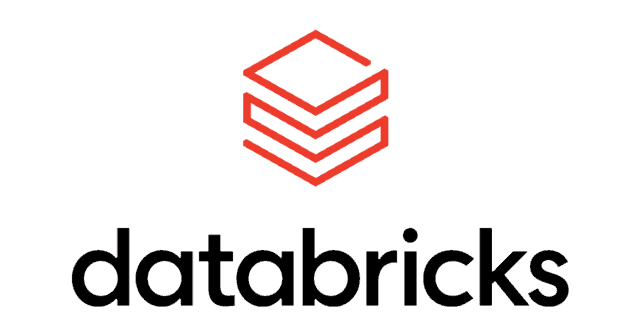Azure Data Factory VS Data Bricks

What is Azure Data Factory?
Azure Data Factory is a cloud-based data integration service that allows you to create, schedule, and manage data workflows between different data stores and processing services. It is a fully managed service that enables you to move, transform, and analyze large volumes of data from on-premises to the cloud or from one cloud environment to another.
With Azure Data Factory, you can easily create data pipelines that can ingest data from different sources like relational databases, NoSQL databases, data lakes, and data warehouses. You can also process and transform the data using a wide range of data processing services like Azure Functions, Azure HDInsight, and Azure Databricks.
ADF provides a visual interface for building and managing data pipelines, which makes it easy to create and monitor data integration workflows. You can also use Azure DevOps for version control and CI/CD pipeline automation, which makes it easier to collaborate with other developers and stakeholders in the data integration process.
One of the key benefits of using Azure Data Factory is its ability to handle complex data integration scenarios. It provides a rich set of connectors and data transformation activities that allow you to create data pipelines that can move and transform data in real-time or in batches. You can also schedule these data pipelines to run on a regular basis or trigger them based on specific events.
Another advantage of using Azure Data Factory is its scalability and flexibility. You can easily scale up or down your data integration services based on your workload needs. Additionally, you can monitor and manage your data pipelines from a central location using Azure Monitoring and Azure Log Analytics.
Overall, Azure Data Factory is a powerful cloud-based data integration service that provides a robust set of features and capabilities for moving, transforming, and analyzing large volumes of data. It enables you to create data workflows that can handle complex integration scenarios, scale up or down based on your workload needs, and integrate with other Azure services to unlock advanced analytics and machine learning capabilities.
HOW TO USE AZURE DATA FACTORY?
Set up your Azure Data Factory
- Create an Azure account and sign in to the Azure portal.
- Create an Azure Data Factory via the Azure portal.
- Provision the required compute and storage resources for your Data Factory.
Create linked services
- Create linked services that define the connection to your source and destination data stores.
- Configure the connection properties for each linked service.
Create datasets
- Define the dataset schema and metadata for your data store.
- Create datasets that map to your source and destination data stores.
Create pipelines
- Define the data transformation schema and metadata for your data factory.
- Create pipelines that define the workflow for data movement and transformation.
- Add activities to each pipeline to define data transformation steps.
Monitor and manage your Azure Data Factory
- Use Azure Monitor and the Azure portal to monitor your Data Factory.
- Use the Azure portal to manage your Data Factory and its resources.
- Use Azure Log Analytics to gain deeper insights into your Data Factory.
WHAT IS DATABRICKS?

DataBricks is a cloud-based big data processing and analytics platform. It is designed to support large and complex data processing tasks that require a great deal of computation and storage resources. DataBricks was founded by the original creators of Apache Spark, which is a widely used open-source big data processing platform.
DataBricks provides a unified analytics platform that enables data engineers, data scientists, and business analysts to collaborate and work together on data processing and analytics tasks. It includes a range of powerful tools and features aimed at making big data processing and analysis more accessible and manageable.
One of the key features of Databricks is scalability. It provides scalable computing resources that can be provisioned and deprovisioned as needed, which allows users to work with large datasets in a distributed computing environment. This scalability also enables users to handle varying workloads and easily manage resources, which can result in cost savings and improved performance.
DataBricks also includes a range of advanced features, including machine learning libraries, deep learning frameworks, and Apache Spark clusters. These features enable DataBricks users to build and train advanced machine learning models and perform complex data analytics tasks.
Furthermore, DataBricks provides a collaborative workspace that enables teams to share code and results, making it easier to collaborate and work together on data processing and analytics tasks. It also includes built-in security features, such as role-based access control and data encryption, to ensure that your data is secure and compliant with regulatory requirements.
Overall, DataBricks is a cloud-based big data processing and analytics platform that offers features and tools for scalable and collaborative data processing and analytics. It is popular among data engineers, data scientists, and business analysts due to its support for multiple programming languages, built-in machine learning libraries, and advanced features for processing and analyzing complex data.
How To Use Databricks?
Let’s take a look at how to use Databricks to help you manage and analyze your data. We’ll start by looking at how it works, then move on to how you can get started with your own account.
You can install it directly from the Apache Software Foundation (ASF). Alternatively, you can get a Docker image or download the latest binaries from here. Once you’ve installed DataBricks, simply use this command to start your cluster:
To get started with Databricks, you can sign up for an account on their website. Once you’re logged in, you’ll be presented with a dashboard that shows your projects and datasets. You can create new projects or import existing ones from AWS S3 or Google Cloud Storage.
You can use Databricks to analyze your data in a variety of ways. You can use it as an ETL tool to move data from one system to another, or you can use its SQL engine to create reports and perform ad-hoc analytics. If you need help building custom applications that integrate with the rest of your infrastructure, then DataBricks is probably not for you.
AZURE DATA FACTORY VS DATABRICKS
Azure Data Factory is Microsoft’s take on cloud-based ETL and analytics. Like Databricks, it uses Apache Spark as its foundation. It also supports many of the same file formats that you can use in Databricks, such as CSV and JSON.
However, Azure Data Factory doesn’t support SQL queries; instead, it relies on a drag-and-drop interface to create pipelines that allow you to move data between different systems.
Azure Data Factory is an open-source tool from Microsoft that lets you build data pipelines. It’s a little more complex than Databricks, but it also has more features.
Azure Data Factory lets you create jobs that move data between different systems, perform transformations on the data and send it to various destinations. It comes with built-in connectors for different cloud services as well as on-premise databases and applications.
Azure Data Factory and Databricks both offer powerful tools for streamlining your data processes.
Both are cloud-based services that allow you to set up pipelines that automate tasks such as ETL, data cleansing, and analytics.
The two platforms differ in their pricing structure and capabilities.
Azure Data Factory is Microsoft’s take on a data pipeline. It can do most of what Databricks can, with the added benefit of being integrated into your Azure infrastructure.
If you already have a lot of Microsoft products in use at your company, then it may be easier to integrate Data Factory into your existing systems than it would be to switch over to Databricks.
Azure Data Factory is Microsoft’s take on a data integration tool, and it has a lot of similarities to Databricks. Both products provide an ETL engine that allows you to move data from one place to another without writing custom scripts or code.
They also both integrate with other services in the cloud ecosystem, including Azure SQL Database, Azure Machine Learning, and Power BI.
While Databricks is a great tool for performing ad-hoc analytics and creating custom applications, it’s not the best choice for enterprise data management. This is because DataBricks doesn’t have many of the features that are required to manage large datasets at scale, like security or governance tools. If you need to integrate your data warehouse with other systems in your environment then it makes sense to use Azure Data Factory instead.
ADVANTAGES OF AZURE DATA FACTORY
Cloud-based: Azure Data Factory is a service that operates in the cloud. It provides benefits such as scalability, cost-effectiveness, and high availability. Users have the ability to easily adjust their usage based on their needs and are only charged for what they use.
Wide range of connectors: ADF provides connectors for a wide range of data sources and destinations, including on-premises and cloud-based systems, making it easy to integrate data from multiple sources.
Integration with Azure Services: ADF offers efficient integration with various Azure services, including Azure Blob Storage, Azure Data Lake Storage, Azure SQL Database, Azure Synapse Analytics, and more, simplifying the process of working with data stored in these services.
Data transformation capabilities: ADF offers a wide range of data transformation activities such as data cleaning, aggregation, filtering, and more, which can be used to transform data during the pipeline process.
Automation: Azure Data Factory provides extensive automation capabilities that enable you to schedule data integration workflows to run on a regular basis or in response to specific events.
Cost-effective: Azure Data Factory is a cost-effective solution for moving and transforming large volumes of data.You only pay for the compute and storage resources you use.
Security: Azure Data Factory provides enterprise-grade security features, including encryption, authentication, and access control. This ensures that your data is secure and compliant with regulatory requirements
Monitoring and logging: ADF provides extensive monitoring and logging capabilities, allowing you to track pipeline activity, errors, and performance metrics.
Reliability: Azure Data Factory is a highly available service that provides built-in fault tolerance and disaster recovery capabilities. This ensures that your data integration workflows operate reliably and with minimal downtime.
Continuous integration and deployment: ADF integrates easily with Azure DevOps for continuous integration and deployment, making it easy to manage changes to your data integration pipelines.
DISADVANTAGES OF AZURE DATA FACTORY
Complexity: Technical knowledge is required to set up and manage the ADF service, even with the availability of a visual interface for designing data pipelines.
Cost: While ADF is cost-effective in comparison to on-premises data integration solutions, it can become expensive if you need to process large volumes of data or use high-performance features such as Azure Synapse Analytics.
Limited customization: Azure Data Factory comes with a predefined set of activities and data source connectors. This means that if you need to perform a specific type of data transformation, you may need to create custom code activities.
Security concerns: While Azure Data Factory does provide enterprise-grade security features, some users may be hesitant to move sensitive data to the cloud due to concerns about data privacy and security.
Limited monitoring capabilities: While Azure Data Factory does provide built-in monitoring capabilities, some users may require more advanced monitoring and alerting tools.
Limited real-time processing capabilities: ADF is designed primarily for batch processing, and while it does support near real-time processing, it may not be the best solution for applications that require real-time data integration.
Dependency on the cloud: As a cloud-based service, ADF is dependent on internet connectivity and the availability of Azure services. This can impact its reliability in certain scenarios.
ADVANTAGES OF DATABRICKS
Scalability: Scalability: DataBricks is a fully managed cloud platform that can scale resources up and down automatically based on your data processing and analytics needs. This makes it easy to handle large-scale data processing and analytics tasks.
Multi-language support: DataBricks supports multiple programming languages such as Python, SQL, R, and Scala. This enables data engineers, data scientists, and business analysts to work together using their preferred language.
Built-in machine learning libraries: DataBricks includes a range of built-in machine learning libraries that enable users to build and train advanced machine learning models easily.
Collaborative workspace: DataBricks offers a collaborative workspace that enables teams to share code and results, making it easier to work together on data processing and analytics tasks.
Advanced features: DataBricks includes advanced features such as deep learning frameworks, GPU clusters, and data visualization tools. This enables users to perform complex data analytics tasks and visualizations easily.
Flexibility: DataBricks can be used for a wide range of use cases, including data processing, machine learning, and business intelligence. It provides a flexible framework that can adapt to different use cases and requirements.
Security: DataBricks provides built-in security features such as role-based access control and data encryption. This ensures that your data is secure and compliant with regulatory requirements.
Integration: Databricks integrates with a variety of data sources and services, including data lakes, databases, and cloud storage solutions. It provides connectors for services such as Amazon S3, Azure Blob Storage, and Google Cloud Storage. This integration makes it easy for users to work with data from different sources and services.
DISADVANTAGES OF DATABRICKS
Cost: Cost: DataBricks is a paid cloud-based platform, and costs can add up quickly depending on usage and data volume. It is important to monitor costs closely and optimize workloads to minimize expenses.
Complexity: Users who are not familiar with Apache Spark or distributed computing may find that learning how to use Databricks effectively requires a significant amount of time and effort, which could potentially hinder the adoption of the platform.
Dependent on internet connectivity: Since DataBricks is a cloud-based platformpotential limiting factor for users with slow or unreliable internet connectivity.
Limited support for non-Spark workloads: DataBricks is optimized for Apache Spark workloads, and may not be the best solution for workloads that require other big data processing platforms or frameworks.
Data security: While Databricks provides robust security features, users may still be concerned about the security of their data in a cloud-based environment. Some organizations may prefer to keep their data in an on-premises environment or a private cloud.
Integration limitations: While Databricks integrates with many data sources and services, there may be limitations or compatibility issues with some sources or services. Users may need to spend time troubleshooting or finding workarounds to integrate with their specific data sources or services.
, it requires a stable internet connection to access and use. This can be a
DIFFERENCES BETWEEN Azure Data Factory VS Data Bricks
- Azure Data Factory and DataBricks are two different services that provide similar functionality. Both are cloud-based data integration tools that allow you to automate data movement between on-premises systems and cloud storage services.
- However, there are some key differences between the two that may affect which one is better suited for your business needs. DataBricks is a hosted service that makes it easy to: Build, deploy and manage pipelines. Schedule jobs and set up notifications. Use the DataBricks GUI or command line interface (CLI) to edit your code.
- Azure Data Factory is a managed cloud service that can be used in conjunction with tools like DataBricks for end-to-end integration projects, but it also has several features that make it more powerful than DataBricks alone:
- DataBricks is a cloud-based data integration service. It can be used to create pipelines that perform ETL, data analysis and machine learning tasks. DataBricks is designed for enterprises that need to run large-scale analytics jobs over their data. You can use it to build applications that combine multiple sources of data into one place and then analyze them using tools like Apache Spark and Hive.
- The biggest difference is that Azure Data Factory is a fully managed service, while DataBricks is an on-premises software. This means that you have to take care of your own infrastructure with DataBricks, but it also allows you more control over the data pipeline because you can customize it to fit your needs.
- DataBricks is a managed service that offers free trial accounts and charges based on usage. The company also provides additional services such as data engineering, analytics and machine learning.
- Azure Data Factory is a free tool that allows you to build pipelines for moving data from one place to another, but it doesn’t provide any other services beyond this core functionality. Data Factory is a managed service that’s included with your Azure subscription. DataBricks is an on-premises solution that you have to install and maintain yourself.
- Azure Data Factory is an enterprise-grade solution that can be used to automate data movement and process orchestration. It’s designed for organizations with large amounts of data and complex and repetitive operations that require high availability, reliability, security and compliance.
- Azure Data Factory is focused on orchestrating the movement of your data, without having to write code. While also offering more low-level control than a Data Factory job. Data bricks are used in scenarios when you need more low-level control over the data movement.
- For example, if you need to copy or transform data before it reaches your destination or add additional connectivity logic through Azure PowerShell or .NET.
Conclusion
In conclusion, while Azure Data Factory and DataBricks are both cloud-based platforms for processing and managing large volumes of data, they serve different purposes and have different strengths. Azure Data Factory is primarily focused on data integration and management, while DataBricks is focused on big data processing, analytics, and machine learning.
Azure Data Factory provides an intuitive and user-friendly interface for building data pipelines, and offers integration with a range of other Azure services for advanced analytics tasks. It is ideal for enterprises or organizations that require a platform for data integration and movement tasks.
DataBricks, on the other hand, is designed for big data analytics, with a powerful set of tools for data analysis, data science, and machine learning. It provides deeper insights and more advanced analytical capabilities than Azure Data Factory, but requires a greater level of technical expertise.
In summary, both Azure Data Factory and DataBricks provide powerful and feature-rich platforms for managing and processing large volumes of data. The choice between the two will largely depend on your specific use case, the level of technical expertise of your team, and your budget.
Our Courses
Frequently Asked Questions
Azure Data Factory is focused on data integration and ETL workflows, while Databricks is focused on data processing and analysis. Azure Data Factory is built on a workflow-based architecture, while Databricks is built on Apache Spark. Azure Data Factory is better suited for integrating data from multiple sources, while Databricks is better suited for processing and analyzing large volumes of data.
Azure Data Factory provides a more user-friendly and intuitive interface for building data pipelines and workflows, while Databricks requires more technical expertise to use effectively.
Azure Data Factory supports SQL, Python, and .NET, while Databricks supports a broader range of languages, including Python, R, SQL, and Scala.
Yes, Azure Data Factory and Databricks can be used together to build end-to-end data processing and analysis workflows. Azure Data Factory can be used to extract and integrate data from multiple sources, and Databricks can be used to process and analyze the data.
Databricks is generally better suited for working with big data due to its scalability and its built-in support for Apache Spark, a distributed computing framework.
Azure Data Factory is better suited for integrating with other Azure services and cloud-based data sources, while Databricks provides broader support for a range of data sources and services, including on-premises and cloud-based environments.



